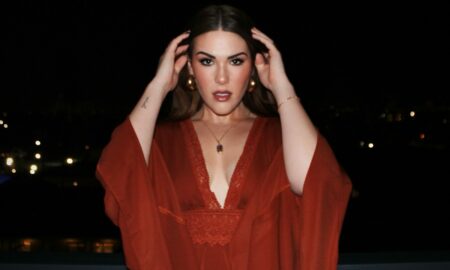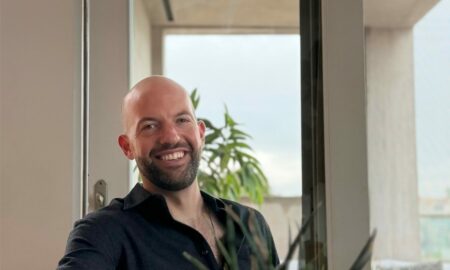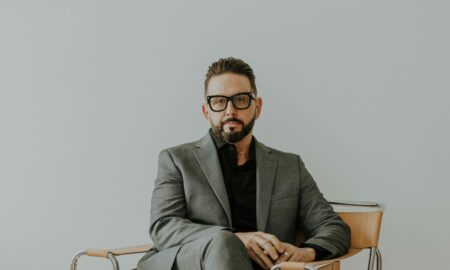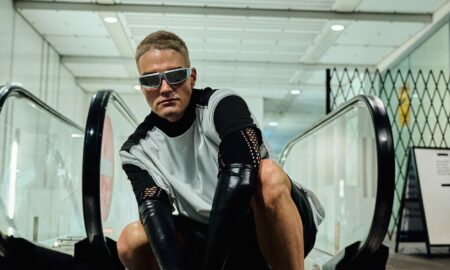

Today we’d like to introduce you to Maggie Sfingi.
Maggie, can you briefly walk us through your story – how you started and how you got to where you are today.
I joke that I’ve been self-employed for over half my life—and I’m only 22.
My twin sister and I started our first company when we were only nine years old. For just about three years, we ran a graphic design agency from our shared bedroom in Idaho. We even hired other artists to work with us, growing our team to half a dozen or so as we worked through PayPal. No one ever found out just how young we were.
Fast forward a few more years and we’re both in high school. Bit (yet again) by the business bug, we decided to create an apparel company. Looking back, I would have killed to have been a fly on the wall. We took over our parents’ garage, installing a heat press and sewing machine to make our own designs and headwear. We created a few different SKUs, got a bunch of local kids together, and did our first photoshoot. Blissfully ignorant when it came to inventory management, we quickly found out how capital intensive retail can be.
The company ultimately evolved into a headwear collection, offering pieces designed by locals across the country. We partnered with photographers from coast to coast, trading product for content as we built our following and brand awareness across social media. In less than six months, we had generated over 10,000 followers and were shipping internationally. During the day, we were full-time high school students. But every afternoon, we’d rush home, pack the latest orders, and race like hell to the post office to make it out before the 4:00 pm cut-off. And then, college happened.
Turns out, you can’t keep growing a company from two different college campuses—especially when you don’t have any manufacturing infrastructure in place. Before making the move out to California, we both packed up the garage and said our goodbyes. We closed down the website and both headed to our respective schools.
During the fall of my sophomore year at USC, I got restless. I remember calling my sister, who was then a sophomore at Stanford, and brainstorming what our next move would be. Little did I know, that call would jumpstart not only the next two and a half years, but also my career. That November, we created our company Merakite (the word “Meraki” means “doing something with soul, creativity, or love. When you put ‘something of yourself’ into what you’re doing, whatever it may be”).
I’m a huge data person. I geek out about numbers, Excel spreadsheets, algorithms, and pretty much anything that falls under the general “data” umbrella. Matched with my sister’s artistic side, we launched a data-driven creative agency focused on digital marketing, web design, branding, and more. I leaned heavily into my consumer behavior background, leveraging the power of data analytics and human psychology as I turned metrics into meaningful insights.
My background in data science has given us an undeniable edge when it comes to our specific industry. Today’s brands and clients don’t just want “pretty” marketing materials or witty copy. They need tangible proof that they’re reaching the right people with the right message, the right branding, and the right ROI.
We saw this trend across industries, from small startups to Fortune 500 companies. In the world of digital marketing, everyone has gotten caught up in the “vanity” metrics; things like followers and likes. Using our own client base for market research, we started asking pointed questions about how brands were measuring the true success of their business. How did they really—I mean REALLY— know that their strategy was even working? Which channels were most profitable? How was social media impacting their business?
These questions ultimately led us to our latest project, a marketing analytics software called “Trendmo.” After starting development in the summer of 2019, we’re getting ready to make our official launch later this spring. Trendmo is the ultimate culmination of both my skillset as well as my sister’s.
Nothing about the last few years has been easy—but it’s been worth it.
Overall, has it been relatively smooth? If not, what were some of the struggles along the way?
The past few years have had their fair share of challenges, but I still wouldn’t have changed a thing. As cheesy as it sounds, I feel like each of those obstacles have helped make me the person I am today (I know, I told you—cheesy!).
My college experience was far from typical. When most of my friends were out on Thursday nights, I was online working with developers who were halfway across the globe and just starting their Friday morning. My weekends consisted mostly of doing laundry, running errands, and catching up on work. I was constantly juggling between my academic obligations and my professional relationships (especially since many of my clients never knew I was still in college). I’d pull crazy late nights cramming for exams and doing homework because I’d spend my regular 9-5 working hours on calls or being accessible for meetings.
Through it all, it still never felt like work. Yes, I was tired. Yes, I was stressed. Yes, I was 100%, undeniably dependent on my coffee maker.
Please tell us about Merakite.
On Merakite’s homepage, you’ll find a snippet that goes something like this:
“We believe that behind every data point is a real person. They have a job, a hobby, a throwback song that makes them want to dance. Whether they’re the late-adopter type or the line-up-overnight type, they all have something in common: they’re human. We believe followers, visitors, and customers are full of life—and we think brands should be, too.”
In a nutshell, this is what Merakite stands for. We want to turn brands into storytellers. We want to help them exude authenticity in a way that lets them connect with their most passionate and engaged fans. By leveraging data and insights across industries, we help personify companies and create consistent brand language. So whether you’re a traditional eCommerce retailer or a B2B manufacturing facility, it doesn’t matter. Through consistent iterations and careful data analysis, we can pinpoint exactly which strategies are right for your target market.
The best part? It doesn’t feel calculated. Yes, we’re data-driven. But that doesn’t make us any less creative.
If you had to go back in time and start over, would you have done anything differently?
If I had to start over, I would have had more trust in the process. I got caught up in what “everyone else” was doing, to the point where I almost gave up on Merakite completely. I was chasing something that I thought was what I wanted: the typical corporate job at the shiny tech startup. A lot, and I mean a LOT, of my attention went into pursuing that path. So much of my attention, in fact, that I felt a lot of my passion fade in the work I was doing with Merakite.
Endless interviews and recruiter receptions later, I finally came up for air. I started to ask myself “why?” a lot more. I started to think about what it would mean to give up on Merakite, just for the sake of fitting into someone else’s box. The corporate route wasn’t for me—it never was.
The day I fully “bought in” to Merakite was one of the best days of my young professional life.
Contact Info:
- Website: www.merakite.com
- Phone: +1 (650) 918-4630
- Email: [email protected]
- Instagram: https://instagram.com/merakite
- Facebook: https://www.facebook.com/merakiteofficial
- Other: https://www.linkedin.com/company/merakite/





Suggest a story: VoyageLA is built on recommendations from the community; it’s how we uncover hidden gems, so if you or someone you know deserves recognition please let us know here.




















